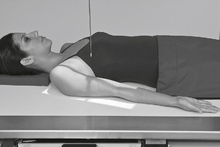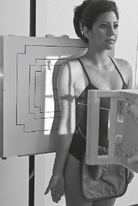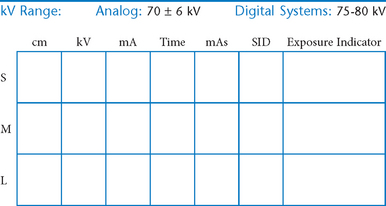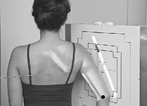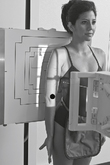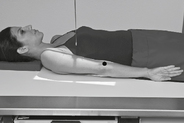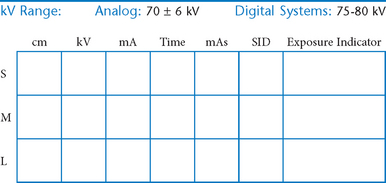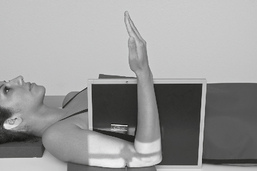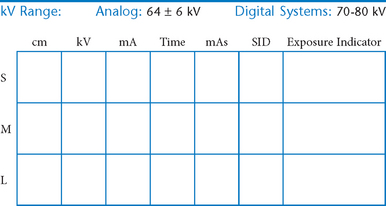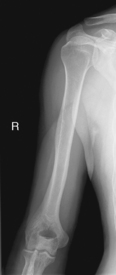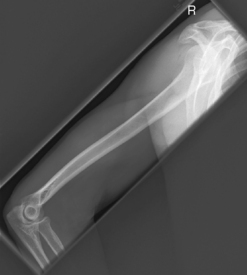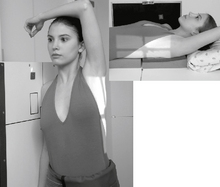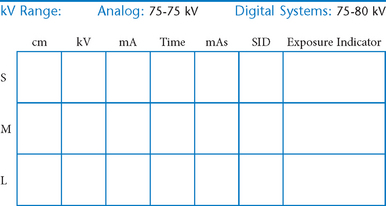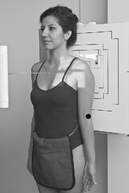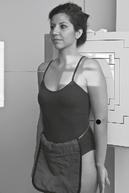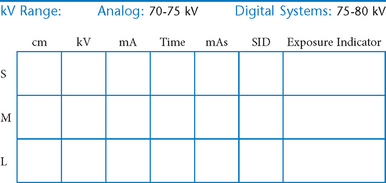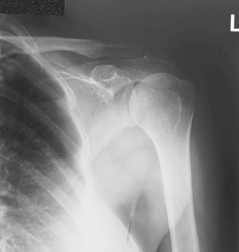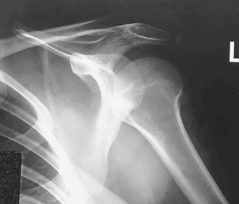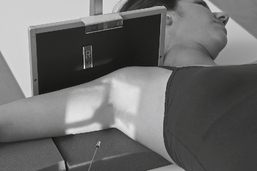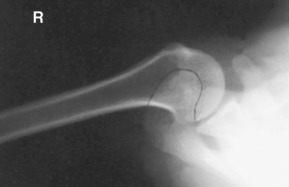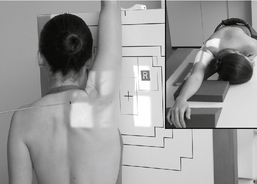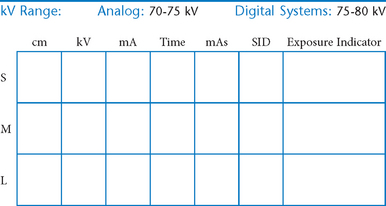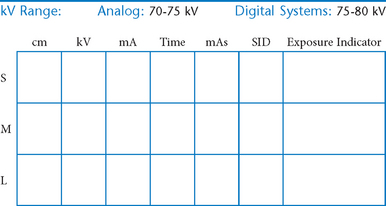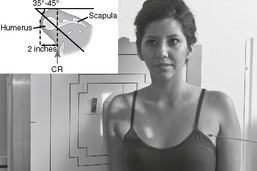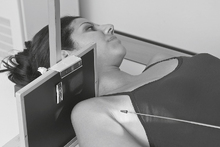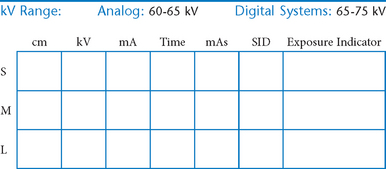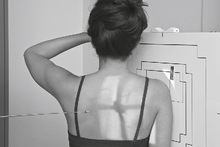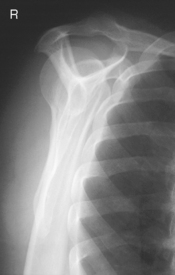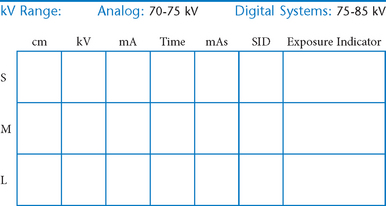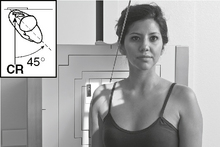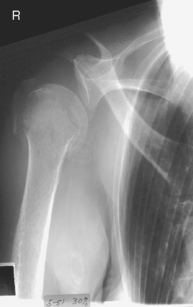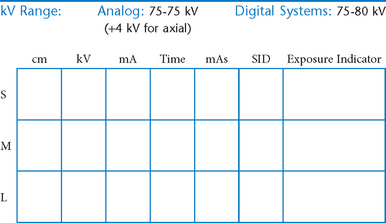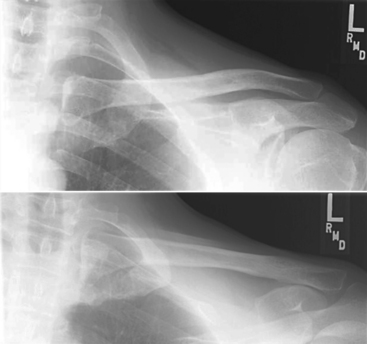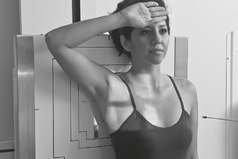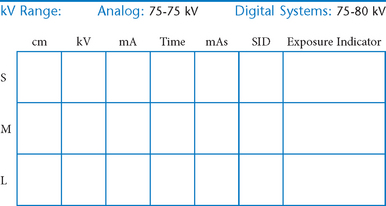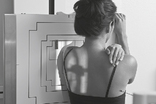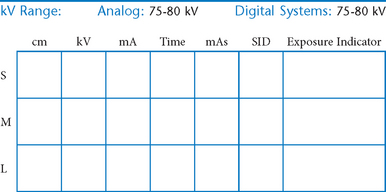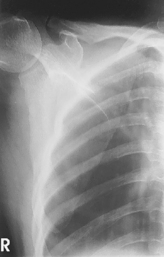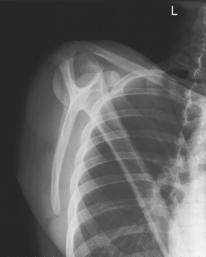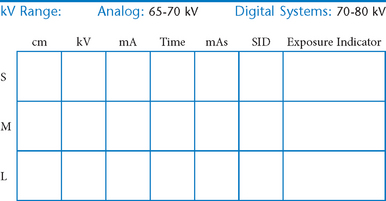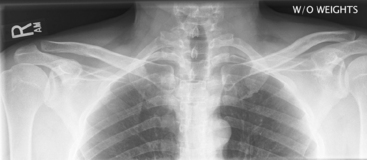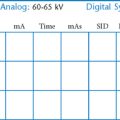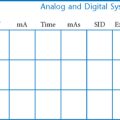Humerus and Shoulder Girdle
 AP external and internal rotation (R)
AP external and internal rotation (R)
 AP external and internal rotation critique
AP external and internal rotation critique
 Inferosuperior axial (Lawrence method) (S)
Inferosuperior axial (Lawrence method) (S)
 PA transaxillary projection (Hobbs modification) (S)
PA transaxillary projection (Hobbs modification) (S)
 PA transaxillary projection critique
PA transaxillary projection critique
 Inferosuperior axial (Clements modification) (S)
Inferosuperior axial (Clements modification) (S)
 Inferosuperior axial (Clements modification) critique
Inferosuperior axial (Clements modification) critique
 Posterior oblique (Grashey method) (S)
Posterior oblique (Grashey method) (S)
 Posterior oblique (Grashey method) critique
Posterior oblique (Grashey method) critique
 Tangential projection—intertubercular (bicipital) groove (Fisk modification) (S)
Tangential projection—intertubercular (bicipital) groove (Fisk modification) (S)
 Tangential projection intertubercular groove critique
Tangential projection intertubercular groove critique
 Scapular Y lateral—anterior oblique position and Neer method (S)
Scapular Y lateral—anterior oblique position and Neer method (S)
 Scapular Y lateral and Neer method critique
Scapular Y lateral and Neer method critique
 AP trauma projection (neutral rotation) (S)
AP trauma projection (neutral rotation) (S)
 Transthoracic lateral (Lawrence method) (S)
Transthoracic lateral (Lawrence method) (S)
 Transthoracic lateral critique
Transthoracic lateral critique
Important for humerus and shoulder projections: Do not attempt to rotate upper limb if fracture or dislocation is suspected without special orders by a physician.
AP Humerus*

Rotational Lateral Humerus*

Position (May Be Taken Erect AP or PA, or Supine)
Trauma Lateral Humerus*
(Midhumerus and Distal Humerus)

For proximal humerus, see transthoracic lateral or scapular Y.
Transthoracic Lateral Proximal Humerus
AP Shoulder*
(External and Internal Rotation)

Warning: Do not attempt if fracture or dislocation is suspected.
Position
• Erect (seated or standing) or supine, arm slightly abducted
• Rotate thorax as needed to place posterior shoulder against IR
External Rotation:
Rotate arm externally until hand is supinated and epicondyles are parallel to IR.
AP Shoulder—External and Internal Rotation
Inferosuperior Axial*

Warning: Do not attempt if fracture or dislocation is suspected.
Inferosuperior Axial
Inferosuperior Axial*
Posterior Oblique*

A special projection for visualizing glenoid cavity in profile with open joint space
Scapular Y Lateral—Anterior Oblique Position and Neer Method*

Scapular Y Lateral—Anterior Oblique Position and Neer Method
AP Shoulder Trauma Projection*

• 24 × 30 cm C.W. (10 × 12″) (or lengthwise to show more of humerus if injury includes proximal half of humerus)
Lateral Shoulder Trauma Projection*
Transthoracic Lateral (Lawrence Method)

AP Apical Oblique Axial Shoulder*
AP and AP Axial Clavicle*

AP Scapula*

Lateral Scapula*

Acromioclavicular (AC) Joints*
(AP—Bilateral with and without Weights)

Warning: Rule out fracture first before taking “with weight” projection.
• 35 × 43 cm C.W. (14 × 17″) or (2) 18 × 24 cm (8 × 10″) for broad shoulders
*Bontrager Textbook, 8th ed, p. 183.
*Bontrager Textbook, 8th ed, p. 184.
*Bontrager Textbook, 8th ed, p. 185.
*Bontrager Textbook, 8th ed, p. 186.
*Bontrager Textbook, 8th ed, pp. 187 and 188.
*Bontrager Textbook, 8th ed, p. 189.
*Bontrager Textbook, 8th ed, p. 190.
*Bontrager Textbook, 8th ed, p. 191.
*Bontrager Textbook, 8th ed, p. 192.
*Bontrager Textbook, 8th ed, p. 193.
*Bontrager Textbook, 8th ed, pp. 196 and 197.
*Bontrager Textbook, 8th ed, p. 194.
*Bontrager Textbook, 8th ed, p. 195.
*Bontrager Textbook, 8th ed, p. 198.
*Bontrager Textbook, 8th ed, p. 199.
*AP lordotic position can be performed rather than angling CR for AP axial.
*Bontrager Textbook, 8th ed, p. 202.


 Rotational lateral (R)
Rotational lateral (R) Trauma lateral (midhumerus and distal humerus) (S)
Trauma lateral (midhumerus and distal humerus) (S) AP and lateral critique
AP and lateral critique Trauma transthoracic lateral (S)
Trauma transthoracic lateral (S) Transthoracic lateral proximal critique
Transthoracic lateral proximal critique Inferosuperior axial critique
Inferosuperior axial critique AP apical oblique axial (Garth method) (S)
AP apical oblique axial (Garth method) (S) AP apical oblique axial critique
AP apical oblique axial critique AP and AP axial (R)
AP and AP axial (R) AP and AP axial critique
AP and AP axial critique AP (R)
AP (R) Lateral (R)
Lateral (R) AP and lateral scapula critique
AP and lateral scapula critique AP bilateral with and without weights (S)
AP bilateral with and without weights (S) AP AC joint critique
AP AC joint critique